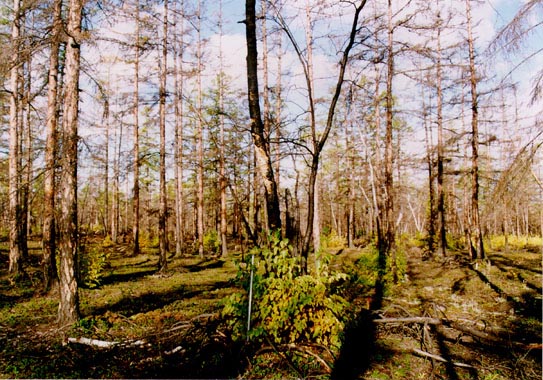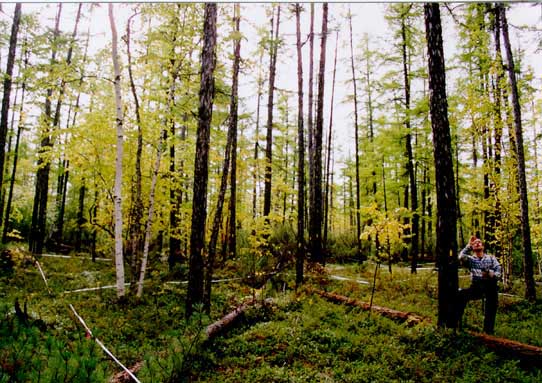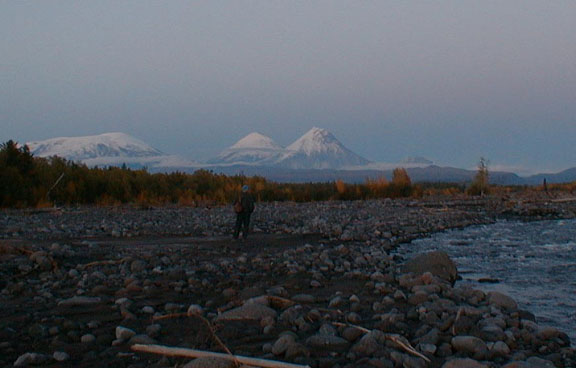Spatial pattern of post-fire forest succession in Kamchatka
カムチャツカ半島における山火事後の森林の2次遷移


カムチャツカ半島ではソビエト連邦崩壊後の社会状況の変化により、人為的原因による山火事が多発している。山火事はもともとこの地域の森林の遷移過程における重要な撹乱であるが、人間活動によってその頻度が変化すれば、森林植生に大きな影響を与えることが予測される。この研究では山火事の後で森林がどのように回復してい行くのかを空間的に解析し、人為的な山火事頻度の増加に伴う植生の変化を予測する。
Kamchatka had been a military stronghold of the Soviet Union during the cold-war years, and access to this remote area of Northeast Asia had been very restricted. After the fall of the Soviet Union, Kamchatka has been opened up to foreign access within the last ten years. Societal changes coupled with this change, such as population increase and outdoor tourism, has resulted in more frequent human-caused forest fires.
Forest fire is a natural disturbance in boreal forests. Many are caused by lightening strikes during hot, dry summers. The vegetation dynamic in boreal forests is dependent upon this natural disturbance regime. However, human intervention that changes the natural fire frequency may have wide-spread consequences on the vegetation.
The objectives of this study are:
(1) To investigate the pattern of post-fire forest regeneration,
(2) To predict the impact of changes in the natural fire frequency on forest dynamics,
This project is part of the Institute of Low Temperature Science COE Project on the effects of global climate change in the Okhosk Sea Region.Photo Galary
Click to enlarge





